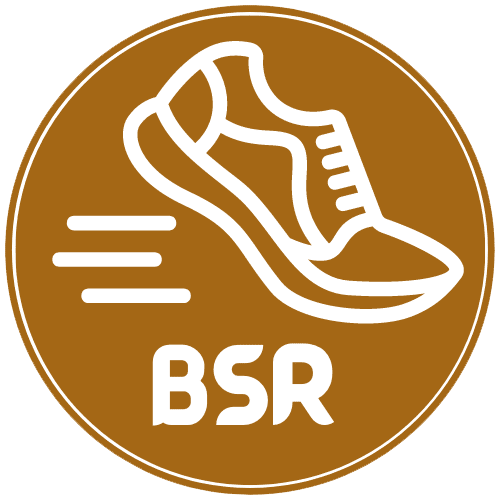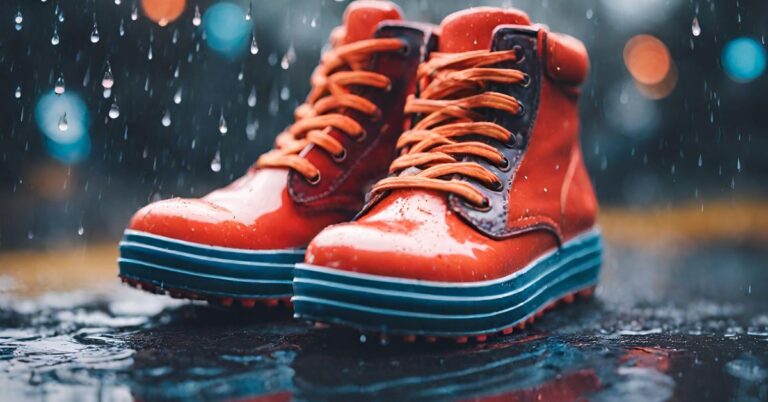How Do I Know If I Need a Wide Shoe: The Ultimate Guide
When it comes to finding the perfect pair of shoes, comfort is key. If you have ever experienced discomfort or pain while wearing shoes, it may be a sign that you need wide shoes. But how do you know if you need them? Let’s explore.
What are wide shoes and why are they important?
Wide shoes are designed to accommodate individuals with wider feet or specific foot conditions that require extra room. They provide a more comfortable fit by offering additional width in the toe box and throughout the shoe.
Here are a few reasons why wide shoes are important:
- Comfort: Wide shoes prevent your feet from feeling cramped or squeezed, allowing for better circulation and reducing the risk of developing foot problems such as bunions or corns.
- Proper Alignment: Wearing shoes that are too narrow can lead to misalignment of the bones in your feet, causing pain and discomfort. Wide shoes help maintain proper alignment, reducing the strain on your feet and joints.
- Foot Conditions: If you have conditions like plantar fasciitis, arthritis, or diabetes, wide shoes can provide the necessary support and cushioning to alleviate symptoms and prevent further complications.
- Injury Prevention: Wide shoes offer stability and reduce the risk of tripping or falling by providing a secure fit and preventing your feet from sliding around inside the shoe.
If you experience any of the following signs, it may be an indication that you need wide shoes:
- Persistent foot pain
- Numbness or tingling in your toes
- Redness or swelling after wearing shoes
- Difficulty finding comfortable footwear
Remember, everyone’s feet are unique, and finding the right shoe size is essential for overall foot health and comfort. If you suspect that you need wide shoes, it’s always best to consult with a professional shoe fitter or podiatrist who can assess your feet and recommend the appropriate footwear.
Understanding shoe width
When it comes to finding the perfect pair of shoes, one size does not fit all. In addition to length, the width of a shoe is an important factor to consider for optimal comfort. But how do you know if you need a wide shoe? Let’s explore the differences between regular and wide shoe widths.
Differentiating between regular and wide shoe widths
Regular shoe width: A regular shoe width is typically labeled as “B” for women and “D” for men. These sizes are considered standard and are designed to fit the majority of people.
Wide shoe width: If you find that your feet feel cramped or uncomfortable in regular-sized shoes, you may need a wide shoe. Wide shoes are available in various widths, with “W” or “EE” being common labels for women and “E” or “EE” for men. These wider sizes provide extra room in the toe box and midfoot area, accommodating individuals with wider feet or those who prefer a roomier fit.
So, how do you know if you need a wide shoe? Here are some signs to look out for:
- Tightness or discomfort: If your feet feel squeezed or cramped in regular-sized shoes, it’s a clear indication that you may need a wider size.
- Bulging or overlapping toes: When your toes are forced together due to narrow shoes, they may appear to bulge out or overlap each other.
- Rubbing or irritation: If you experience rubbing or irritation on the sides of your feet, it could be a sign that your shoes are too narrow.
Remember, everyone’s feet are unique, and what works for one person may not work for another. It’s essential to try on different shoe widths and styles to find the perfect fit for your feet.
By understanding the differences between regular and wide shoe widths and paying attention to the signs your feet are giving you, you can ensure that you find shoes that provide the comfort and support you need.
Signs that you may need a wide shoe
Have you ever experienced discomfort or pain in your feet while wearing shoes? It could be a sign that you need a wide shoe. Many people are unaware that they have wider feet than average, and wearing narrow shoes can lead to various foot issues. Here are some common signs that indicate a need for wide shoes.
Common foot issues that indicate a need for wide shoes
- Bunions: If you notice a bony bump on the side of your big toe, it could be a bunion. This condition often occurs when the toes are squeezed together in narrow shoes, causing the joint at the base of the big toe to protrude.
- Corns and calluses: These thickened areas of skin develop due to friction and pressure from ill-fitting shoes. If you constantly experience corns or calluses on your toes or the sides of your feet, it may be time to consider wider shoes.
- Hammertoes: Hammertoes are characterized by an abnormal bend in the middle joint of one or more toes. They can be caused by wearing shoes that are too narrow, forcing the toes into an unnatural position.
- Ingrown toenails: Narrow shoes can put pressure on your toenails, leading to ingrown toenails. This painful condition occurs when the edge of the nail grows into the surrounding skin.
- Morton’s neuroma: Morton’s neuroma is a thickening of tissue around a nerve leading to the toes, often causing pain and numbness. Wearing tight shoes can exacerbate this condition.
If you experience any of these foot issues or regularly feel discomfort while wearing shoes, it is worth considering trying wide shoes. Properly fitting shoes can alleviate pain, prevent further foot problems, and improve your overall foot health.
Measuring your foot width
Have you ever experienced discomfort or pain while wearing shoes? It could be because you need a wider shoe. Many people are unaware of their foot width and end up wearing shoes that are too narrow, leading to various foot problems. But how do you know if you need a wide shoe?
How to accurately measure your foot width at home
- Get the right tools: To measure your foot width accurately, you will need a ruler or measuring tape, a piece of paper, and a pen or pencil.
- Trace your foot: Place the piece of paper on a hard surface and stand on it with your full weight. Keep your heel against a wall and trace the outline of your foot with the pen or pencil.
- Measure the widest part: Use the ruler or measuring tape to measure the widest part of your foot. This is usually around the ball of your foot.
- Compare the measurement: Once you have the measurement, compare it to a shoe size chart that includes widths. If your measurement falls outside the standard width range, it is likely that you need a wider shoe.
- Try on different widths: When shopping for shoes, make sure to try on different widths to find the most comfortable fit. Look for shoes that provide ample room in the toe box and do not squeeze or pinch your feet.
Remember, everyone’s feet are unique, and having the right shoe width is essential for overall comfort and foot health. If you experience any pain or discomfort while wearing shoes, it may be worth considering a wider shoe option to ensure a proper fit and support for your feet.
Benefits of wearing wide shoes
Why wide shoes can enhance comfort and foot health
When it comes to footwear, finding the right fit is crucial for both comfort and foot health. Many people may not realize that they need wide shoes until they experience discomfort or pain in their feet. Here are some key reasons why wearing wide shoes can be beneficial:
- Extra room for toes: Wide shoes provide more space for your toes to spread out naturally. This can help alleviate pressure and reduce the risk of developing conditions such as bunions, hammertoes, and corns.
- Better stability: Wide shoes offer a wider base of support, which can improve stability and balance. This is particularly important for individuals with conditions like flat feet or pronation issues.
- Reduced friction: Tight-fitting shoes can cause friction and rubbing against the skin, leading to blisters and calluses. Wide shoes help minimize these issues by providing a more comfortable fit and reducing friction.
- Improved circulation: Shoes that are too narrow can restrict blood flow to the feet, leading to discomfort and potential health problems. Wide shoes allow for better circulation, promoting healthier feet.
- Accommodate foot conditions: Individuals with foot conditions such as arthritis, diabetes, or swollen feet may require extra room in their shoes. Wide shoes can provide the necessary space to accommodate these conditions and prevent further discomfort.
It’s important to note that everyone’s feet are unique, and what works for one person may not work for another. If you experience persistent foot pain or discomfort, it is recommended to consult with a podiatrist or footwear specialist who can assess your specific needs and recommend the appropriate shoe size and width.
Remember, investing in properly fitting wide shoes can significantly improve your comfort, foot health, and overall well-being.
Finding the right width for you
When it comes to finding the perfect pair of shoes, one size does not fit all. In fact, many people struggle with finding shoes that are wide enough to accommodate their feet comfortably. If you find yourself constantly dealing with tightness, pinching, or discomfort in your shoes, it may be time to consider a wide shoe. But how do you know if you need a wide shoe?
Tips on determining the appropriate width for your feet
- Measure your feet: Start by measuring the width of your feet using a measuring tape or ruler. Measure the widest part of your foot, typically around the ball area. Compare this measurement to standard shoe width charts to determine if you fall into the wide category.
- Pay attention to discomfort: If you frequently experience pain, blisters, or numbness in your toes or the sides of your feet after wearing shoes for a period of time, it could be a sign that your shoes are too narrow.
- Look for signs of pressure: Check for redness, indentations, or marks on your skin after wearing shoes. These are indications that the shoes are too tight and not providing enough room for your feet.
- Try different brands: Different shoe brands have varying width options. If you consistently struggle with finding comfortable shoes, try exploring brands that offer wider widths.
- Consult a professional: If you’re still unsure about whether you need wide shoes or not, consider visiting a shoe store with knowledgeable staff who can measure your feet and provide expert advice.
Remember, wearing shoes that are too narrow can lead to foot problems and discomfort in the long run. Finding the right width for your feet is essential for maintaining foot health and overall comfort.
Popular wide shoe brands
When it comes to finding the perfect pair of shoes, one size does not fit all. For individuals with wider feet, it can be a challenge to find comfortable and stylish shoes that provide the right fit. Thankfully, there are several popular brands that specialize in wide shoe options.
Recommended brands that specialize in wide shoe options
- New Balance: Known for their extensive range of widths, New Balance offers a wide variety of shoes for both men and women. Their wide shoe options provide extra room in the toe box and midfoot, ensuring a comfortable fit.
- Birkenstock: Renowned for their high-quality and supportive footwear, Birkenstock offers a selection of wide shoes that cater to individuals with wider feet. Their sandals and clogs are known for their adjustable straps and contoured footbeds, providing optimal comfort.
- Skechers: Skechers is a well-known brand that offers a wide range of shoe styles, including athletic shoes, casual sneakers, and work shoes. They have a variety of wide width options available for both men and women.
- Hoka One One: Hoka One One is a popular brand among runners and athletes. They offer wide shoe options that provide ample cushioning and support for individuals with wider feet.
- Clarks: Clarks is a trusted brand known for their comfortable and stylish footwear. They offer a range of wide shoe options for both men and women, ensuring a proper fit without compromising on style.
When shopping for wide shoes, it’s important to consider not only the width but also the overall fit, support, and comfort. It’s recommended to try on different styles and brands to find the best option for your specific foot shape and needs.
Remember, having the right fit is essential for maintaining foot health and preventing discomfort or pain. So, don’t hesitate to explore these popular wide shoe brands to find the perfect pair that combines style and comfort for your wider feet.
Tips for shopping wide shoes
When it comes to finding the perfect pair of shoes, it’s important to consider not only style and comfort but also the width of the shoe. Wearing shoes that are too narrow can cause discomfort and even lead to foot problems. So, how do you know if you need a wide shoe? Here are some tips to help you determine if wide shoes are right for you.
Guidance on selecting the right wide shoes for your needs
- Measure your feet: Start by measuring the width of your feet. You can do this at home using a simple measuring tape or visit a shoe store where professionals can assist you.
- Check for signs of discomfort: If you experience pain, pinching, or numbness in your toes or the sides of your feet while wearing regular-width shoes, it may indicate that you need a wider shoe.
- Look for specific shoe brands: Some shoe brands are known for offering wider widths in their designs. Look for brands that specifically cater to wide feet, as they are more likely to have a better selection of styles and sizes to choose from.
- Consider adjustable features: Look for shoes with adjustable features such as laces, straps, or buckles. These allow you to customize the fit and accommodate wider feet comfortably.
- Try on different sizes: Don’t be afraid to try on different sizes and widths to find the perfect fit. Remember that shoe sizes can vary between brands, so it’s essential to try on various options to find what works best for you.
By following these tips, you can ensure that you find the right wide shoes that provide the comfort and support your feet need. Don’t compromise on fit when it comes to your footwear, as wearing the right size can make a significant difference in your overall foot health and well-being.
Conclusion
When it comes to choosing the right shoes for your feet, it’s important to consider the width of the shoe. Wearing shoes that are too narrow can cause discomfort, pain, and even long-term foot problems. By understanding the signs that indicate you may need a wide shoe, you can take better care of your feet and ensure optimal comfort and support.
Take care of your feet with the proper width shoes
- Listen to your feet: If you experience any discomfort, pain, or swelling in your feet after wearing shoes, it could be a sign that they are too narrow. Pay attention to any redness or irritation as well.
- Measure your feet: Get your feet measured by a professional shoe fitter to determine the width of your feet accurately. This will help you find the right shoe size and width.
- Try on different widths: When shopping for shoes, don’t be afraid to try on different widths to find the most comfortable fit. Wide shoes provide more room for your toes and can alleviate pressure on the sides of your feet.
Frequently asked questions about wide shoes
Q: How do I know if I need a wide shoe?
A: If you experience discomfort, pain, or swelling in your feet after wearing shoes, it may be an indication that you need a wider shoe.
Q: Are wide shoes only for people with wide feet?
A: Not necessarily. Wide shoes are designed to provide more room in the toe box area, which can benefit individuals with wider feet or those who have foot conditions such as bunions or hammertoes.
Q: Can wearing narrow shoes cause foot problems?A: Yes, wearing narrow shoes can lead to foot problems such as bunions, corns, calluses, and ingrown toenails. It’s important to wear shoes that properly fit your feet to avoid these issues.
Remember, taking care of your feet is essential for overall foot health. Investing in the right width shoes can make a significant difference in your comfort and well-being.






